Themed collection Renewable materials and recycling

Super tough poly(lactic acid) blends: a comprehensive review
PLA is a renewable, bio-based, and biodegradable aliphatic thermoplastic polyester that is considered a promising alternative to petrochemical-derived polymers in a wide range of commodity and engineering applications.
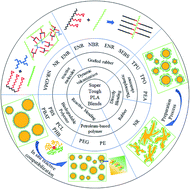
RSC Adv., 2020,10, 13316-13368
https://doi.org/10.1039/D0RA01801E
Challenges and opportunities in the recovery of gold from electronic waste
Rapid global technological development has led to the rising production of electronic waste that presents both challenges and opportunities in its recycling.

RSC Adv., 2020,10, 4300-4309
https://doi.org/10.1039/C9RA07607G
Recent advances in the synthesis and application of photocatalytic metal–metal oxide core–shell nanoparticles for environmental remediation and their recycling process
Metal–metal oxide core–shell nanoparticles have received enormous research attention owing to their fascinating physicochemical properties and extensive applications. In this review we have discussed the challenges and recent advances in their synthesis and application.
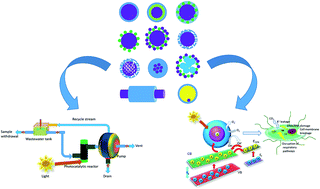
RSC Adv., 2016,6, 83589-83612
https://doi.org/10.1039/C6RA18102C
Addressing the terawatt challenge: scalability in the supply of chemical elements for renewable energy
Global production of the elements where only the most commonly produced elements may help produce energy at the terawatt level.
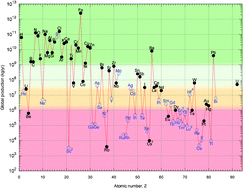
RSC Adv., 2012,2, 7933-7947
https://doi.org/10.1039/C2RA20839C
Reprocessing and recycling of thermosetting polymers based on bond exchange reactions
In this paper, we experimentally demonstrated the reprocessing, recycling and repairing abilities of pulverized thermoset polymer with exchangeable bonds.
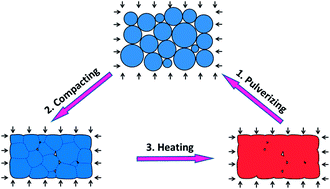
RSC Adv., 2014,4, 10108-10117
https://doi.org/10.1039/C3RA47438K
Solvent extraction of rare earths elements from nitrate media in DMDOHEMA/ionic liquid systems: performance and mechanism studies
Extraction of La(III), Eu(III) and Fe(III) was compared in n-dodecane and in two ionic liquids (ILs) [EBPip+] [NTf2−] and [EOPip+] [NTf2−]. Extraction mechanisms have been investigated as a function of pH.
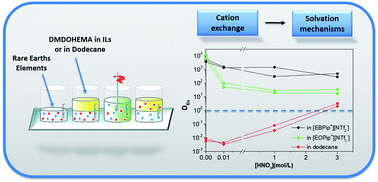
RSC Adv., 2021,11, 31197-31207
https://doi.org/10.1039/D1RA05359K
Parameter optimization and yield prediction of cathode coating separation process for direct recycling of end-of-life lithium-ion batteries
The pre-treatment efficiency of the direct recycling strategy in recovering end-of-life Li-ion batteries is predicted with levels of control factors.

RSC Adv., 2021,11, 24132-24136
https://doi.org/10.1039/D1RA04086C
Towards circular fashion – transforming pulp mills into hubs for textile recycling
Textile recycling can be integrated in pulp mills through the use of green liquor in the pretreatment of the textiles.

RSC Adv., 2021,11, 12321-12329
https://doi.org/10.1039/D1RA00168J
Renewable bio-based adhesive fabricated from a novel biopolymer and soy protein
The crosslinking reaction process of SPI/EHL-ESO adhesives.

RSC Adv., 2021,11, 11724-11731
https://doi.org/10.1039/D1RA00766A
A catalyst-free and recycle-reinforcing elastomer vitrimer with exchangeable links
A catalyst-free elastomer vitrimer was prepared through reactive blending of commercial available XNBR and ENR with exceptional recycle-reinforcing property.

RSC Adv., 2020,10, 39271-39276
https://doi.org/10.1039/D0RA07728C
A highly sensitive, selective and renewable carbon paste electrode based on a unique acyclic diamide ionophore for the potentiometric determination of lead ions in polluted water samples
Due to the toxicity of lead(II) to all living organisms destroying the central nervous system and leading to circulatory system and brain disorders, the development of effective and selective lead(II) ionophores for its detection is very important.

RSC Adv., 2020,10, 17552-17560
https://doi.org/10.1039/D0RA01435D
Separation of neodymium and dysprosium by solvent extraction using ionic liquids combined with neutral extractants: batch and mixer-settler experiments
The combination of ionic liquids with Cyanex 923 improves the separation of Nd(III) and Dy(III).
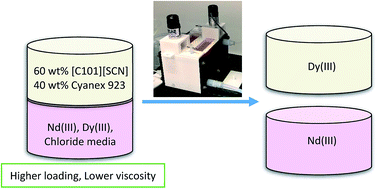
RSC Adv., 2020,10, 307-316
https://doi.org/10.1039/C9RA08996A
Impurity removal with highly selective and efficient methods and the recycling of transition metals from spent lithium-ion batteries
A strategy for metal purification and recovery from spent lithium-ion batteries is demonstrated by taking advantage of precipitation, electrodeposition and solvent extraction.
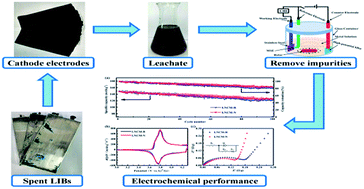
RSC Adv., 2019,9, 21922-21930
https://doi.org/10.1039/C9RA02331C
Renewable vanillin based flame retardant for poly(lactic acid): a way to enhance flame retardancy and toughness simultaneously
A bio-based PLA composite with excellent fire performance, improved toughness and good processability.

RSC Adv., 2018,8, 42189-42199
https://doi.org/10.1039/C8RA08531E
Sustainable inverse-vulcanised sulfur polymers
We demonstrate two renewable crosslinkers that can stabilise sustainable high sulfur content polymers, via inverse-vulcanisation.
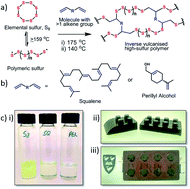
RSC Adv., 2018,8, 27892-27899
https://doi.org/10.1039/C8RA04446E
Production of renewable long-chained cycloalkanes from biomass-derived furfurals and cyclic ketones
Renewable cyclic alkanes were produced in high yield via condensation of biomass-based furfurals and cyclic ketones followed by hydrodeoxygenation.

RSC Adv., 2018,8, 13686-13696
https://doi.org/10.1039/C8RA01723A
A renewable bio-based epoxy resin with improved mechanical performance that can compete with DGEBA
The aim of this study is to find a suitable substitution for diglycidyl ether bisphenol A (DGEBA) to avoid the devastating side effects of bisphenol A.
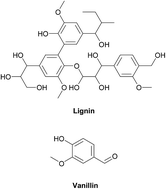
RSC Adv., 2017,7, 8694-8701
https://doi.org/10.1039/C6RA27283E
Direct regeneration of cathode materials from spent lithium iron phosphate batteries using a solid phase sintering method
A direct regeneration of cathode materials from spent LiFePO4 batteries using a solid phase sintering method has been proposed in this article.

RSC Adv., 2017,7, 4783-4790
https://doi.org/10.1039/C6RA27210J
3D hierarchical porous N-doped carbon aerogel from renewable cellulose: an attractive carbon for high-performance supercapacitor electrodes and CO2 adsorption
3D hierarchical porous N-doped carbon aerogel from renewable cellulose: an attractive carbon for high-performance supercapacitor electrode and CO2 adsorption.

RSC Adv., 2016,6, 15788-15795
https://doi.org/10.1039/C6RA00822D
Renewable pine cone biomass derived carbon materials for supercapacitor application
We report on the transformation of pine cone biomass into porous carbon via KOH activation and carbonization at 800 °C as electrode materials for supercapacitors.

RSC Adv., 2016,6, 1800-1809
https://doi.org/10.1039/C5RA21708C
From NdFeB magnets towards the rare-earth oxides: a recycling process consuming only oxalic acid
A recycling process was developed in which only oxalic acid is consumed to remove and separate the rare-earth metals from NdFeB magnets.

RSC Adv., 2014,4, 64099-64111
https://doi.org/10.1039/C4RA13787F
About this collection
We are very pleased to present our 10th Anniversary collection on renewable materials and recycling!Looking back over the last 10 years, we would like to showcase some of the very best articles that have been published in RSC Advances. Many of these papers have been cited hundreds of times, providing valuable advances for further research, and some continue to be among the journal’s most downloaded articles as of today.
We hope you enjoy our 10th Anniversary collection on renewable materials and recycling!